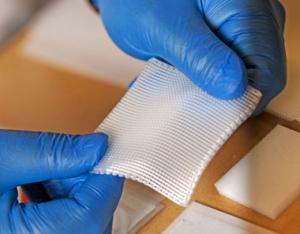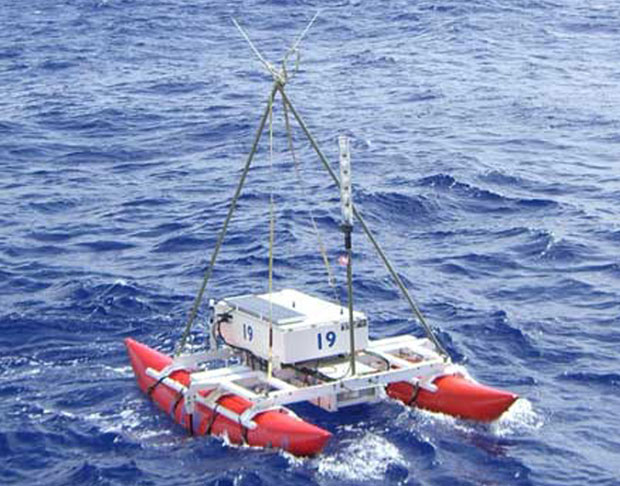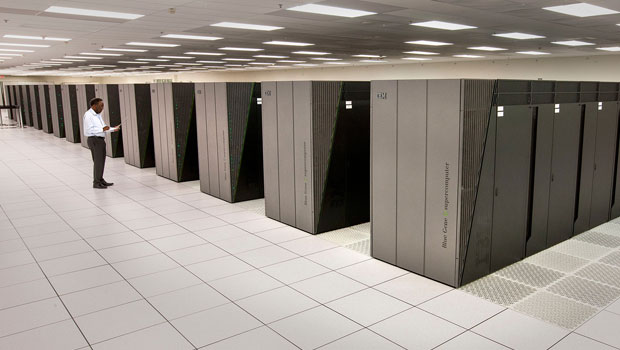Ensuring the safety, security, reliability, and effectiveness of the enduring stockpile LLNL Annual
LLNL’s foremost responsibility is to ensure the safety, security, reliability, and effectiveness of the nation’s nuclear arsenal. The knowledge gained through experiments, theory, and simulations is applied to assess the condition of stockpile weapons and to develop and certify needed modifications with confidence in the absence of nuclear tests.
Annual Stockpile Assessment
In FY 2015, LLNL completed required activities for Cycle 20 of the annual stockpile assessment. The process included comprehensive peer review by the nuclear design laboratories (LLNL and Los Alamos National Laboratory (LANL)) of each other’s weapons in the stockpile. Laboratory scientists continue to improve the baseline weapons-physics simulation codes that support annual assessments and certification of weapons. This year, for example, LLNL conducted highly detailed studies of detonation processes in high explosives. Assessment tools were also applied to close a significant finding investigation and complete requested analyses for LANL and NNSA headquarters.
Life-Extension Program Activities
LLNL is partnered with Sandia National Laboratories as the design agencies to extend the life of and certify a warhead for the bomber-delivered Long-Range Standoff (LRSO) missile. In June 2015, NNSA completed a yearlong Phase 6.1 study to prepare conceptual designs for a warhead based on the W80 nuclear explosive package. The proposed cost-conscious design options for the W80-4 improve warhead safety, security, and reliability. The Phase 6.2 study began in July 2015 and will develop over about a two-year span a mature set of requirements and refined design options that meet these requirements. Additional LLNL activities are enabling ongoing and future life-extension programs (LEPs). These efforts include participating in the B61 LEP Interlaboratory Peer Review, strengthening the technical foundation for certification of weapon pit reuse options, and developing new high explosives in support of future systems.
and super-typhoon Maysak in a 330-foot Navy vessel.
Broad Support of the NNSA Complex
Livermore researchers are exploring the use of additive manufacturing (AM) to develop next-generation manufacturing processes and materials tailored for the NNSA complex. The goal is to accelerate development-to-production cycles and create lower cost parts that have more desirable material properties. The Laboratory has applied advances in AM to fabricate tooling for NNSA production facilities and has demonstrated AM techniques for manufacturing parts for weapons applications. Computer simulations and hydrodynamic experiments support these AM development activities by assuring that the fabricated materials will meet demanding performance requirements.
In addition to research on AM for NNSA application, LLNL personnel engaged in a wide range of activities to support other sites across the NNSA complex. Efforts have enhanced technical capabilities at Pantex to nondestructively examine weapon pits, production methods at the Kansas City Plant, and safety processes broadly within NNSA and DOE. LLNL also provided diagnostics support for flight test programs.
From Sequoia to Sierra
LLNL is preparing for delivery in 2017–2018 of Sierra, a next-generation supercomputer built by IBM. The procurement, which was announced in November 2014, is part of the DOE-sponsored CORAL (Collaboration of Oak Ridge, Argonne, and Lawrence Livermore national laboratories) program to accelerate the development of high-performance computing (HPC) to meet mission needs. Livermore is working with IBM, NVIDIA, and Mellanox to design, develop, and deploy a system providing 120-150 petaflops (quadrillion floating-point operations per second) peak performance. Sustained performance will be four to six times greater than that of the Sequoia supercomputer at LLNL, which is a shared resource for the NNSA laboratories to assess the condition of the stockpile. An NNSA Center of Excellence for supercomputing established at Livermore will facilitate collaborative research on large-scale scientific and engineering applications for use on Sierra. A precursor system will arrive in 2016 to start testing some early software and applications.
Sierra is a technically challenging but vital next step in extreme-scale computing. On behalf of NNSA and the DOE Office of Science, LLNL also manages the FastForward 2 project, which targeted $100 million to leading HPC companies to develop exascale (10 18 flops) computing technologies. In addition, Livermore is actively assisting DOE in planning its Exascale Computing Initiative.
Stockpile Stewardship Experiments
Researchers made great strides to better understand the properties of plutonium under extreme conditions. Four groundbreaking plutonium shots at the National Ignition Facility (NIF) were safely executed and produced exceptionally high-quality data. LLNL researchers also completed an important series of experiments studying high-pressure shock compression of plutonium at LLNL’s Joint Actinide Shock Physics Experimental Research (JASPER) Facility, located at the Nevada National Security Site. In addition, new diagnostic techniques tested for use at JASPER and successful tests of PHOENIX (see figure below) prepare the way for future experiments that will help deepen our understanding of materials at extreme conditions.
LLNL completed all planned work in FY 2015 in support of the national hydrotest program including technically challenging integrated weapons experiments at hydrodynamic testing facilities at Los Alamos and the Contained Firing Facility at LLNL’s Site 300. These experiments supported pit reuse options, studied new materials produced using AM technologies, tested technical options for use in the W80-4 LEP, and developed diagnostics techniques. The many additional experiments conducted at NIF in support of stockpile stewardship (see , National Ignition Facility ).
Honoring 20 Years of Stockpile Stewardship
President Bill Clinton formally committed the nation to the science-based Stockpile Stewardship Program (SSP) on August 11, 1995, when he announced that the United States would seek a comprehensive nuclear-test-ban treaty. In October of 2015, NNSA hosted a celebration of the 20th anniversary of SSP as one of the nation’s greatest achievements in science and security. The event featured remarks by Secretary of Energy Ernest Moniz, Secretary of State John Kerry, and Under Secretary for Nuclear Security and NNSA Administrator Lieutenant General Frank G. Klotz, USAF (Ret.). General C. Robert Kehler (left), USAF (Ret.) and former commander of U.S. Strategic Command, led a panel discussion with the three NNSA national laboratory directors (left to right, Charles McMillan, Jill Hruby, and William Goldstein).










